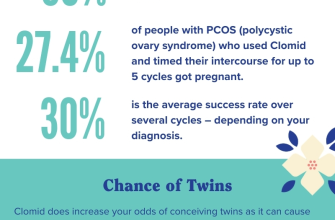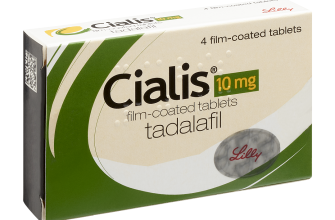Ciprofloxacin HCL 500mg is not a recommended treatment for chlamydia. While it was used in the past, antibiotic resistance is a growing concern, and current guidelines advocate for other antibiotics like azithromycin or doxycycline.
Azithromycin is often the preferred single-dose treatment for chlamydia. This means you take only one dose, making treatment much simpler. Doxycycline, an alternative, requires a seven-day course. Both are highly effective when taken correctly.
Crucially, self-treating chlamydia is dangerous. Untreated chlamydia can lead to serious complications like pelvic inflammatory disease (PID) in women and infertility in both men and women. Accurate diagnosis and appropriate treatment from a healthcare professional are vital.
Always consult your doctor or other qualified healthcare provider for diagnosis and treatment of chlamydia. They can perform a test to confirm the infection and prescribe the most suitable antibiotic for your specific situation. They will also provide guidance on preventing reinfection.
- Ciprofloxacin’s Mechanism of Action Against Chlamydia
- Inhibition of DNA Replication
- Targeting Topoisomerase IV
- Specific Considerations
- Alternative Treatment Options
- Dosage and Administration of Ciprofloxacin for Chlamydia
- Effectiveness of Ciprofloxacin in Treating Chlamydia Infections
- Potential Side Effects and Risks Associated with Ciprofloxacin Treatment
- Alternatives to Ciprofloxacin for Chlamydia Treatment and When to Seek Medical Advice
Ciprofloxacin’s Mechanism of Action Against Chlamydia
Ciprofloxacin targets bacterial DNA gyrase and topoisomerase IV, enzymes crucial for bacterial DNA replication and repair. Chlamydia trachomatis, the bacterium causing chlamydia, relies on these enzymes.
Inhibition of DNA Replication
- Ciprofloxacin binds to these enzymes, preventing them from functioning correctly.
- This blockage halts DNA replication, ultimately preventing the bacteria from multiplying.
- The resulting inability to replicate leads to bacterial death.
Targeting Topoisomerase IV
The impact on topoisomerase IV is particularly significant for Chlamydia’s cell division. Disrupting this enzyme specifically hinders the separation of replicated DNA during cell division, further contributing to bacterial death.
Specific Considerations
Keep in mind that Ciprofloxacin’s effectiveness against Chlamydia might vary based on factors such as antibiotic resistance and correct dosage. Always consult a healthcare professional for diagnosis and treatment.
Alternative Treatment Options
- Azithromycin is another frequently used antibiotic for chlamydia treatment.
- Your doctor will consider your individual health status when choosing the most suitable antibiotic.
Dosage and Administration of Ciprofloxacin for Chlamydia
Ciprofloxacin is typically prescribed as a single 500mg dose. You should take it orally with a full glass of water, preferably on an empty stomach, at least one hour before or two hours after a meal. Avoid taking antacids or dairy products near the time you take your dose, as they may reduce absorption.
Your doctor may adjust the dosage based on your individual needs and health status. Always follow the exact directions provided by your healthcare provider. Do not increase or decrease the dosage without consulting your doctor.
Complete the entire course of treatment, even if symptoms disappear before you finish the medication. Stopping early can allow the infection to return and potentially become resistant to antibiotics. Be sure to discuss any questions or concerns about the medication with your doctor or pharmacist.
Remember, Ciprofloxacin is a powerful antibiotic. It’s crucial to use it responsibly and only as directed by a qualified medical professional. Self-medicating can be harmful and may result in complications.
After completing the treatment, follow-up testing is often recommended to confirm that the infection has been cleared. This follow-up appointment will help your healthcare provider determine the efficacy of treatment and rule out any persistent infection.
Effectiveness of Ciprofloxacin in Treating Chlamydia Infections
Ciprofloxacin was once a common treatment for chlamydia, but its use is now limited due to increasing antibiotic resistance. While it could successfully treat chlamydia in the past, current guidelines generally recommend other antibiotics.
Studies from the early 2000s showed high cure rates with a single dose of Ciprofloxacin for uncomplicated chlamydia infections. However, the emergence of resistant strains significantly reduces its efficacy. A 2010 study highlighted a noticeable rise in resistance. This prompted changes in treatment protocols.
Azithromycin and doxycycline are now the preferred treatments, offering better success rates and posing a smaller risk of treatment failure due to antibiotic resistance. These antibiotics often provide broader coverage against a wider range of chlamydia strains.
If you’ve been diagnosed with chlamydia, consult your doctor immediately. They will determine the most appropriate antibiotic based on your specific circumstances and local resistance patterns. Self-treating chlamydia is dangerous and can lead to serious complications, such as pelvic inflammatory disease.
Potential Side Effects and Risks Associated with Ciprofloxacin Treatment
Ciprofloxacin, while effective against Chlamydia, can cause side effects. Common reactions include nausea, diarrhea, and stomach upset. These usually resolve without intervention. Less frequent, but still possible, are headaches, dizziness, and insomnia.
More serious, though rare, side effects involve tendonitis and tendon rupture, particularly in older adults or those taking corticosteroids. Report any tendon pain immediately to your doctor.
Ciprofloxacin can also affect your liver. Monitor for signs like jaundice (yellowing of skin or eyes) or dark urine. These require prompt medical attention.
Allergic reactions, ranging from mild skin rashes to severe anaphylaxis, are possible. Stop taking Ciprofloxacin and seek immediate medical care if you experience symptoms such as hives, swelling, or difficulty breathing.
Interactions with other medications exist. Inform your doctor about all medications, supplements, and herbal remedies you are taking. This prevents potentially harmful drug interactions. Finally, Ciprofloxacin may cause photosensitivity, increasing your skin’s sensitivity to sunlight. Protect yourself with sunscreen and protective clothing.
Alternatives to Ciprofloxacin for Chlamydia Treatment and When to Seek Medical Advice
Doxycycline is a common and highly effective alternative to Ciprofloxacin for treating chlamydia. A single dose of Azithromycin is another frequently prescribed option. Your doctor will determine the best course of treatment based on your individual health and any potential drug interactions.
While these antibiotics are generally well-tolerated, potential side effects include nausea, vomiting, and diarrhea. Discuss these possibilities with your healthcare provider.
Seek immediate medical attention if you experience severe allergic reactions such as difficulty breathing, swelling of the face, lips, or tongue, or hives. Also, contact your doctor if symptoms persist or worsen after completing the prescribed treatment.
Regular testing, especially if you’re sexually active, is crucial for early detection and treatment of chlamydia. Untreated chlamydia can lead to serious complications, including pelvic inflammatory disease (PID) in women and infertility in both men and women.
This information does not substitute professional medical advice. Always consult a healthcare professional for diagnosis and treatment of chlamydia or any other medical condition.










